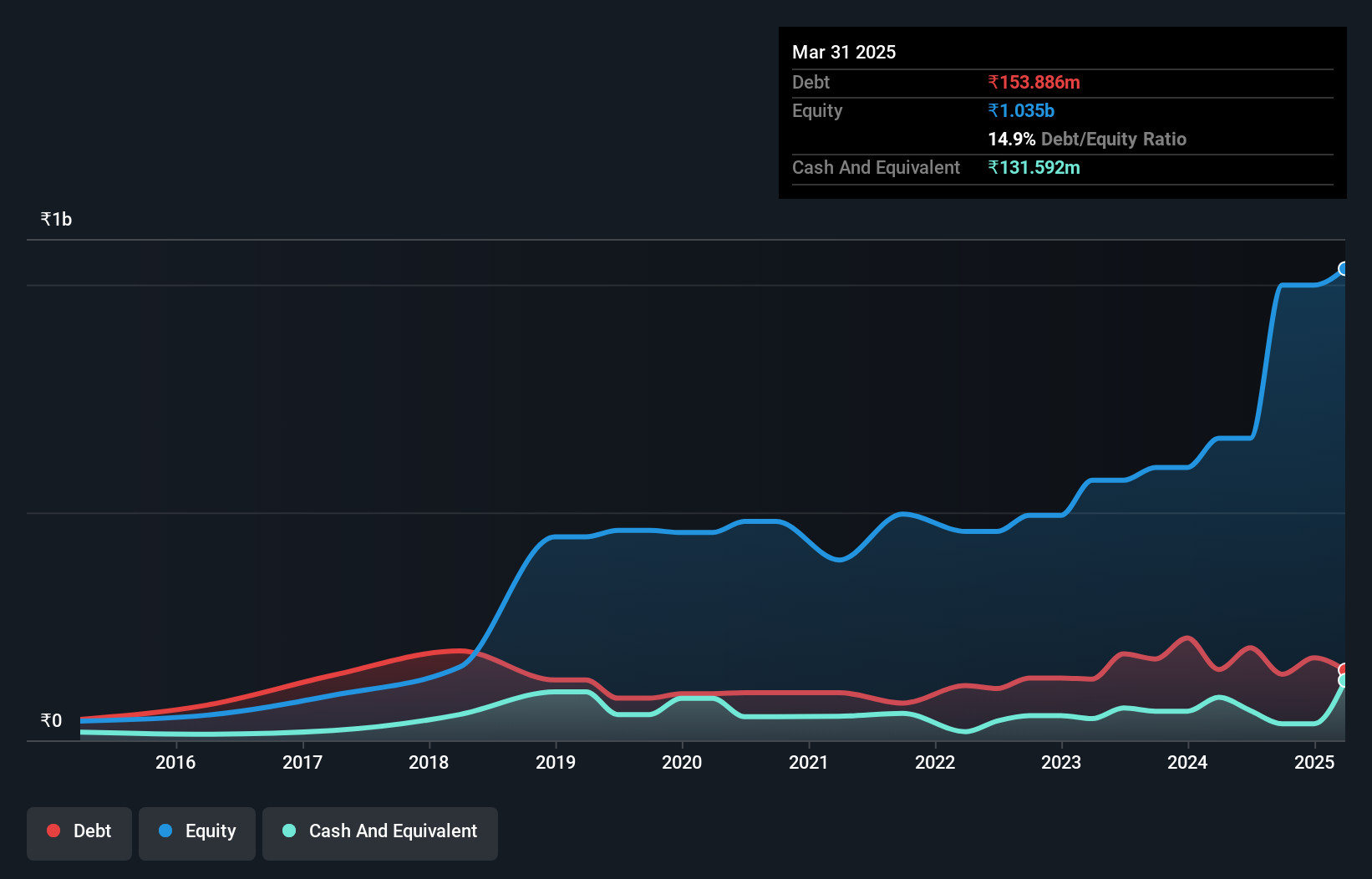
David Iben put it well when he said, 'Volatility is not a risk we care about. What we care about is avoiding the permanent loss of capital.' So it seems the smart money knows that debt - which is usually involved in bankruptcies - is a very important factor, when you assess how risky a company is. Importantly, Dhruv Consultancy Services Limited (NSE:DHRUV) does carry debt. But should shareholders be worried about its use of debt?
When Is Debt A Problem?
Debt assists a business until the business has trouble paying it off, either with new capital or with free cash flow. Part and parcel of capitalism is the process of 'creative destruction' where failed businesses are mercilessly liquidated by their bankers. However, a more usual (but still expensive) situation is where a company must dilute shareholders at a cheap share price simply to get debt under control. Having said that, the most common situation is where a company manages its debt reasonably well - and to its own advantage. When we think about a company's use of debt, we first look at cash and debt together.
How Much Debt Does Dhruv Consultancy Services Carry?
The chart below, which you can click on for greater detail, shows that Dhruv Consultancy Services had ₹153.9m in debt in March 2025; about the same as the year before. On the flip side, it has ₹131.6m in cash leading to net debt of about ₹22.3m.

A Look At Dhruv Consultancy Services' Liabilities
According to the last reported balance sheet, Dhruv Consultancy Services had liabilities of ₹354.9m due within 12 months, and liabilities of ₹32.7m due beyond 12 months. On the other hand, it had cash of ₹131.6m and ₹283.8m worth of receivables due within a year. So it can boast ₹27.7m more liquid assets than total liabilities.
Having regard to Dhruv Consultancy Services' size, it seems that its liquid assets are well balanced with its total liabilities. So while it's hard to imagine that the ₹1.40b company is struggling for cash, we still think it's worth monitoring its balance sheet.
See our latest analysis for Dhruv Consultancy Services
We use two main ratios to inform us about debt levels relative to earnings. The first is net debt divided by earnings before interest, tax, depreciation, and amortization (EBITDA), while the second is how many times its earnings before interest and tax (EBIT) covers its interest expense (or its interest cover, for short). The advantage of this approach is that we take into account both the absolute quantum of debt (with net debt to EBITDA) and the actual interest expenses associated with that debt (with its interest cover ratio).
Looking at its net debt to EBITDA of 0.16 and interest cover of 4.7 times, it seems to us that Dhruv Consultancy Services is probably using debt in a pretty reasonable way. So we'd recommend keeping a close eye on the impact financing costs are having on the business. We saw Dhruv Consultancy Services grow its EBIT by 8.6% in the last twelve months. Whilst that hardly knocks our socks off it is a positive when it comes to debt. When analysing debt levels, the balance sheet is the obvious place to start. But you can't view debt in total isolation; since Dhruv Consultancy Services will need earnings to service that debt. So if you're keen to discover more about its earnings, it might be worth checking out this graph of its long term earnings trend.
Finally, while the tax-man may adore accounting profits, lenders only accept cold hard cash. So the logical step is to look at the proportion of that EBIT that is matched by actual free cash flow. During the last three years, Dhruv Consultancy Services burned a lot of cash. While investors are no doubt expecting a reversal of that situation in due course, it clearly does mean its use of debt is more risky.
Our View
Dhruv Consultancy Services's conversion of EBIT to free cash flow was a real negative on this analysis, although the other factors we considered were considerably better. In particular, we are dazzled with its net debt to EBITDA. When we consider all the factors mentioned above, we do feel a bit cautious about Dhruv Consultancy Services's use of debt. While debt does have its upside in higher potential returns, we think shareholders should definitely consider how debt levels might make the stock more risky. When analysing debt levels, the balance sheet is the obvious place to start. However, not all investment risk resides within the balance sheet - far from it. Case in point: We've spotted 4 warning signs for Dhruv Consultancy Services you should be aware of, and 1 of them is concerning.
Of course, if you're the type of investor who prefers buying stocks without the burden of debt, then don't hesitate to discover our exclusive list of net cash growth stocks, today.
New: Manage All Your Stock Portfolios in One Place
We've created the ultimate portfolio companion for stock investors, and it's free.
• Connect an unlimited number of Portfolios and see your total in one currency
• Be alerted to new Warning Signs or Risks via email or mobile
• Track the Fair Value of your stocks
Have feedback on this article? Concerned about the content? Get in touch with us directly. Alternatively, email editorial-team (at) simplywallst.com.
This article by Simply Wall St is general in nature. We provide commentary based on historical data and analyst forecasts only using an unbiased methodology and our articles are not intended to be financial advice. It does not constitute a recommendation to buy or sell any stock, and does not take account of your objectives, or your financial situation. We aim to bring you long-term focused analysis driven by fundamental data. Note that our analysis may not factor in the latest price-sensitive company announcements or qualitative material. Simply Wall St has no position in any stocks mentioned.
About NSEI:DHRUV
Dhruv Consultancy Services
An infrastructure consultancy company, provides design, engineering, procurement, construction, and integrated project management services for highways, bridges, tunnels, architectural, environmental engineering, and ports in India.
Excellent balance sheet slight.
Market Insights
Community Narratives


